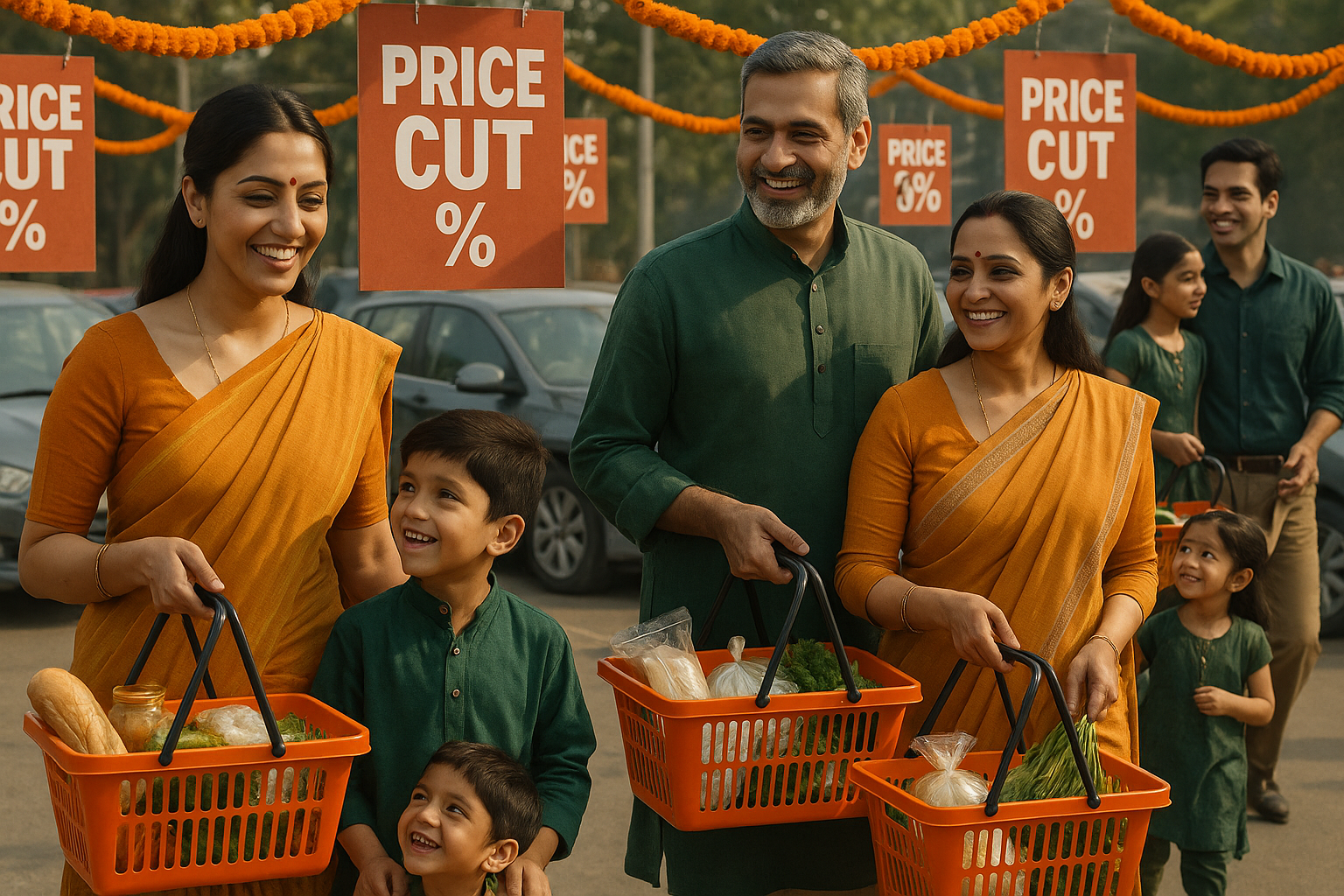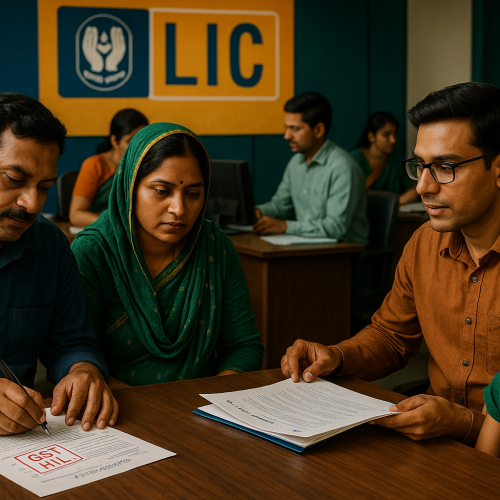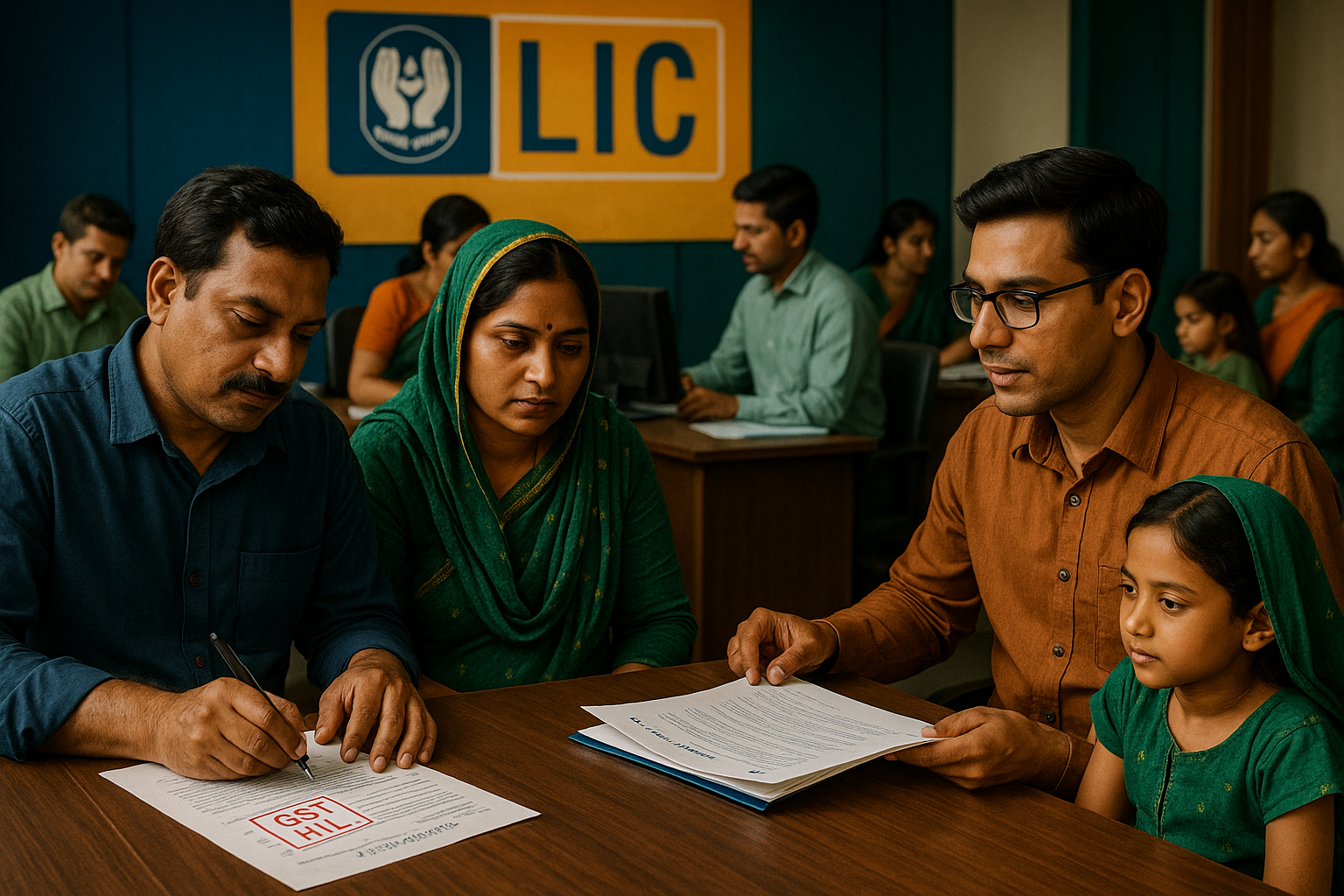India’s new GST 2.0 reform, effective September 22, has slashed tax rates across essentials, medicines, appliances, and automobiles—leaving an estimated ₹2 lakh crore extra in consumer pockets. Finance Minister Nirmala Sitharaman called it a transformative step to spur demand and boost growth. From cheaper milk and ghee to reduced auto prices, households are already feeling the relief. Timed with the festive season, the reform is expected to spark a consumption surge, softening inflation and driving economic momentum.
Core Development
GST 2.0 has collapsed multiple tax slabs into a simplified structure. More than 90% of items from the 12% slab have shifted to 5%, easing costs for millions of households.
Amul cut ghee prices by ₹40 a litre and reduced rates on 700 product packs.
Mother Dairy slashed milk by ₹2 a litre, saving families about ₹60 monthly.
Patanjali Foods reduced Nutrela soya chunks by ₹20 per kilo.
Life-saving medicines and insurance premiums are now GST-exempt, eliminating the earlier 18% burden.
Automobiles are also cheaper: Maruti Suzuki, Tata Motors, and Hyundai rolled out reductions that bring hatchbacks and SUVs down by thousands of rupees.
Key Drivers / Issues
The GST reset comes as households face sticky inflation and high living costs. By boosting disposable income, the government aims to:
Stimulate consumption across urban and rural markets.
Support FMCG, electronics, and auto sectors with an 8–10% effective price cut.
Offset the impact of global tariffs and geopolitical uncertainties on the economy.
Stakeholder Impact
For consumers, everyday essentials and big-ticket purchases are now significantly cheaper. Retailers and manufacturers expect higher sales volumes during the festive season. MSMEs and artisans gain competitiveness as handicrafts, tea, jute bags, and agro-goods face lower taxes. For the economy, analysts project an additional 2–3 percentage points of industry growth in the near term.
Industry & Policy Reactions
Experts have praised the move as a “classic demand stimulus.” Dinesh Kanabar, CEO of Dhruva Advisors, called it a masterstroke, while Grant Thornton Bharat noted FMCG price cuts could lift growth sharply. Auto makers are betting on a record festive season, with SUVs leading demand.
Challenges Ahead
Fiscal costs of revenue foregone will need to be balanced against growth gains.
Ensuring businesses pass on tax cuts fully to consumers.
Monitoring inflationary pressures in case demand spikes too quickly.
Strategic Outlook
GST 2.0 may set the tone for a new consumption cycle, particularly in semi-urban and rural India. If households continue to experience tangible relief, the reform could anchor both economic stability and political goodwill in the months ahead.
Why This Matters
The GST reset directly touches household budgets, making essentials and big purchases affordable again. With ₹2 lakh crore unlocked, India’s middle class and rural consumers are poised to power the next leg of economic growth.












